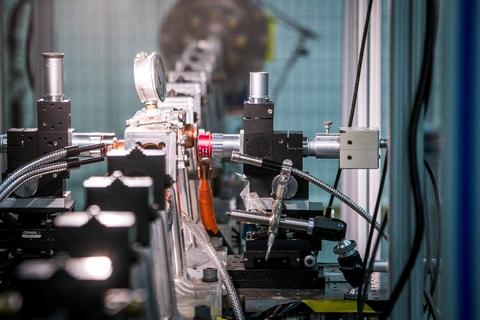
A new collaborative effort among NIST and the Institute of Manufacturing Engineering and Photonic Technologies (IFT) located at the Technical University of Vienna, Austria, and Nordmetall GmbH, in Chemnitz, Germany, combines the latest dynamic material measurements, modeling, and instrumented machining experiments to lower costs and improve the performance of machining processes that help produce hundreds of billions of dollars of products, ranging from smart phone cases to airplane components.
To this day, the machining process is not fully understood because the conditions experienced by the workpiece material (an aluminum block that becomes your phone case, for example) as chips are removed from it are so extreme that conventional laboratory test methods cannot be used to understand and quantify their behavior, leading to poor predictions of the process, increasing the cost and time of product design and manufacture.
For example, when chips are removed by a rapidly-spinning cutting tool, the material heats up so rapidly that it reaches more than half the melting temperature in mere milliseconds. For many metals, these temperatures can cause their atomic structure (their “microstructure”) to become unstable and change into a more stable arrangement. This, in turn, can substantially change the metal’s strength, or its resistance to forming chips. While such atomic rearrangements take a relatively short time to occur, in machining there just isn’t enough time for them because of the very high spin rate of the workpiece or cutting tool. For scientists who want to predict this process using mathematical models, this presents a problem.
Conventional mechanical tests that usually tell us how metals behave at high temperatures use heating times that are much longer that those in a typical machining operation, and often longer than it takes for microstructures to stabilize at high temperatures. As a result, scientists and engineers have no way to understand and predict the forces and temperatures that occur as phone cases are being manufactured. The problem gets worse when very high strength metals, like high carbon steel or titanium, are machined, because temperatures and stresses are so high that cutting tools often fail and must be replaced, temporarily stopping production and increasing costs. And when new high-strength materials are invented with innovative processes like additive-manufacturing, there is virtually no way to understand how to machine them into their final form without expensive and laborious trial-and-error methods.

To address this problem, NIST developed a unique mechanical test procedure that combines a well-known dynamic mechanical test (called a Kolsky bar test) with rapid pre-heating using direct electrical current. The instrument can heat metals to one thousand degrees in seconds or less and then immediately measure their dynamic strength at loading speeds approaching real machining conditions. While straightforward in concept, this method took years of development and required investments in customized electronic controller design, high-speed non-contact temperature sensing, and the latest high-speed data acquisition equipment available. In addition, advanced numerical modeling software was applied to model the experiment to understand its capabilities and limits to a level of detail well beyond conventional measurement methods. To help apply the new data and models to practical machining research, NIST partners at IFT and Nordmetall have performed new, state-of-the-art instrumented machining experiments focusing on carbon steels (used in almost $1 trillion worth of products worldwide) and simulated these experiments with the latest finite element modeling tools designed specifically for analyzing machining problems.
Results of the initial study were quite successful, showing improvements in all three critical aspects of the process (forces, temperatures and chip shapes) compared to a conventional model. Future plans include expanding the collaboration’s carbon steel effort to include other important engineering materials such as titanium alloys (used in aircraft components) and nickel-based superalloys used in a variety of high-performance parts.
Paper:
F. Bleicher, C. Baumann, S. Krall, S. Mates, S. Herzig, T, Alder and N. Herzig, Considering the influence of heating rate, complex hardening and dynamic strain aging in AISI 1045 machining: experiments and simulations, CIRP Annals - Manufacturing Technology, 70 (2021) 49-52. DOI: 10.1016/j.cirp.2021.04.083

